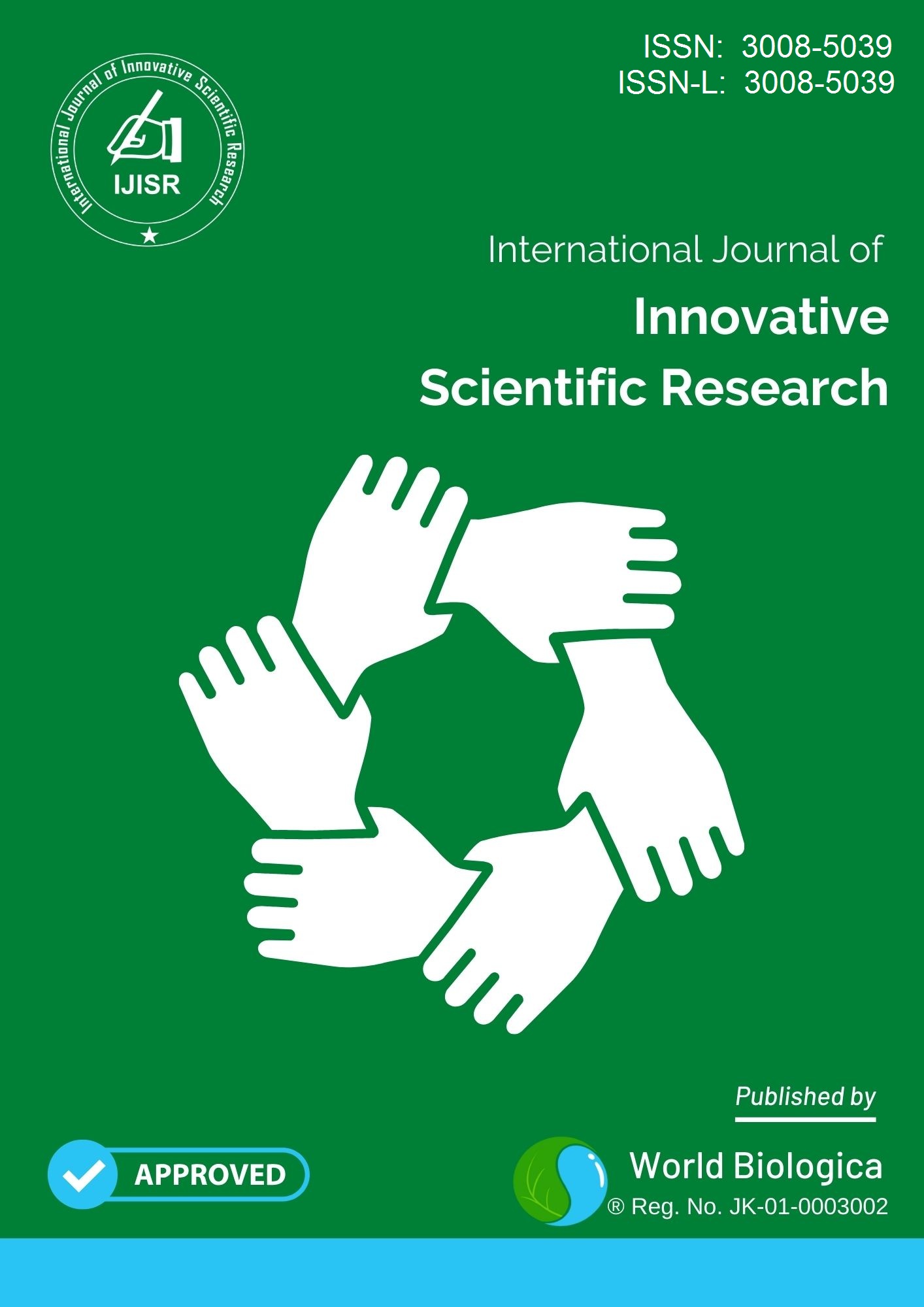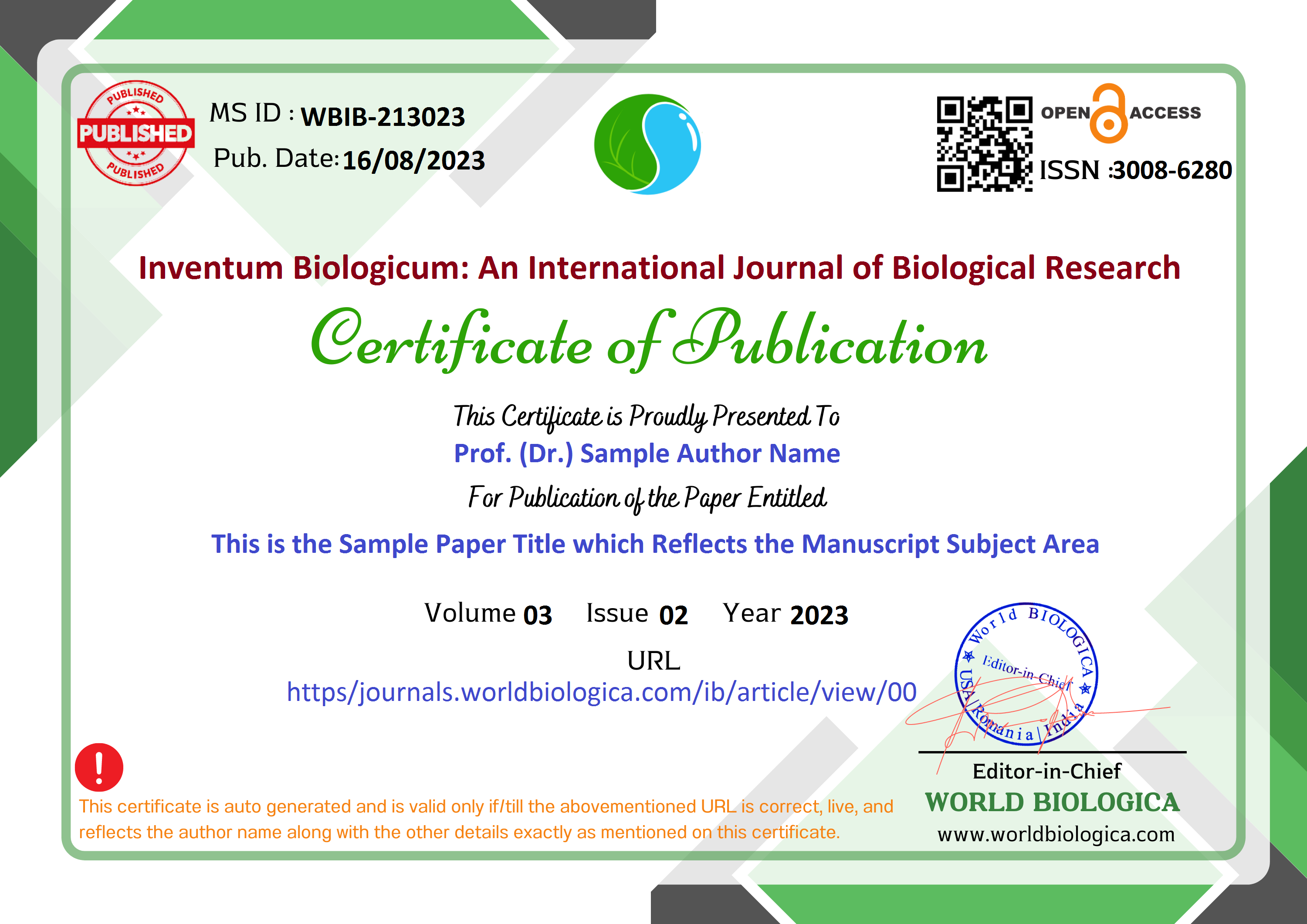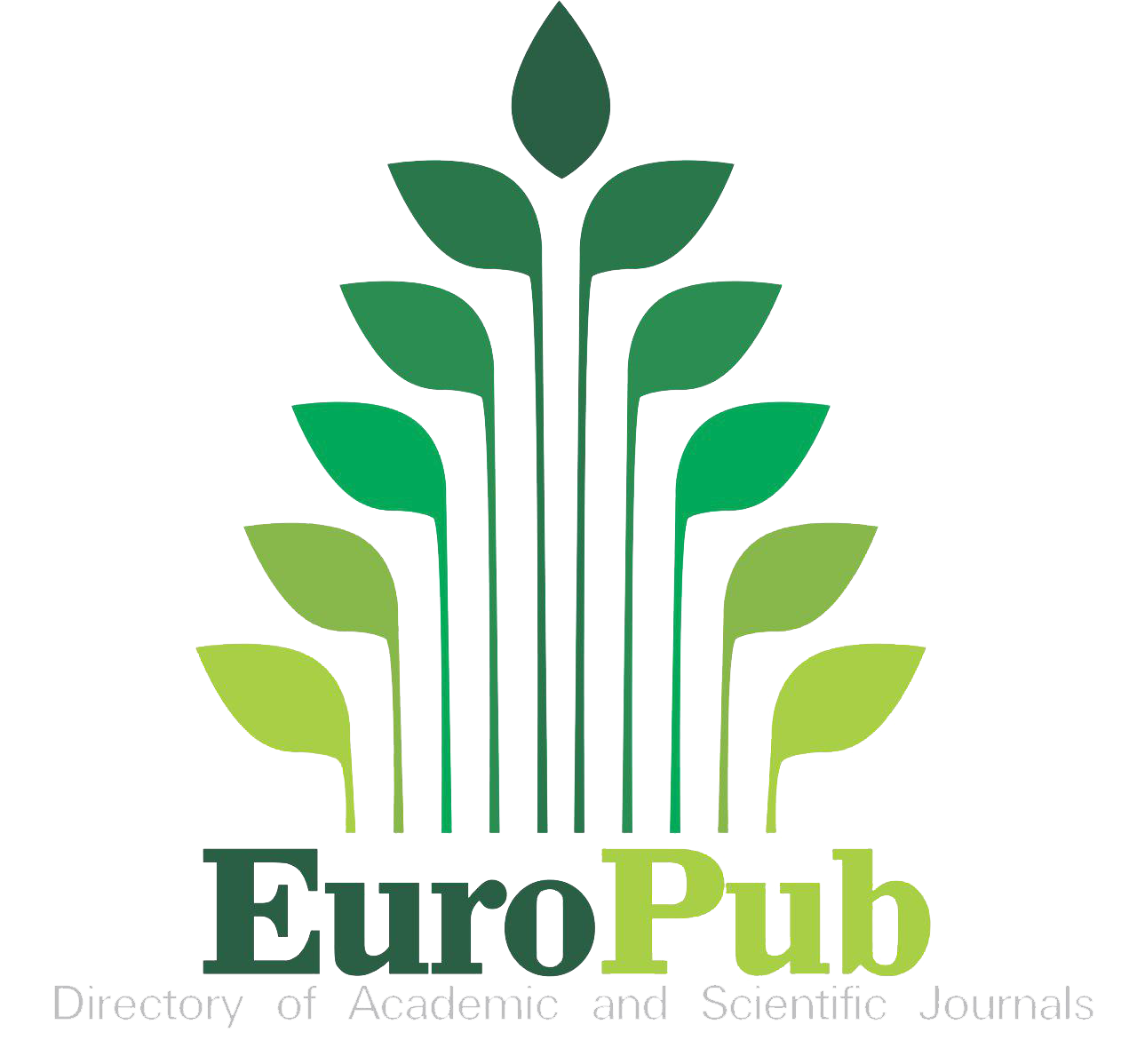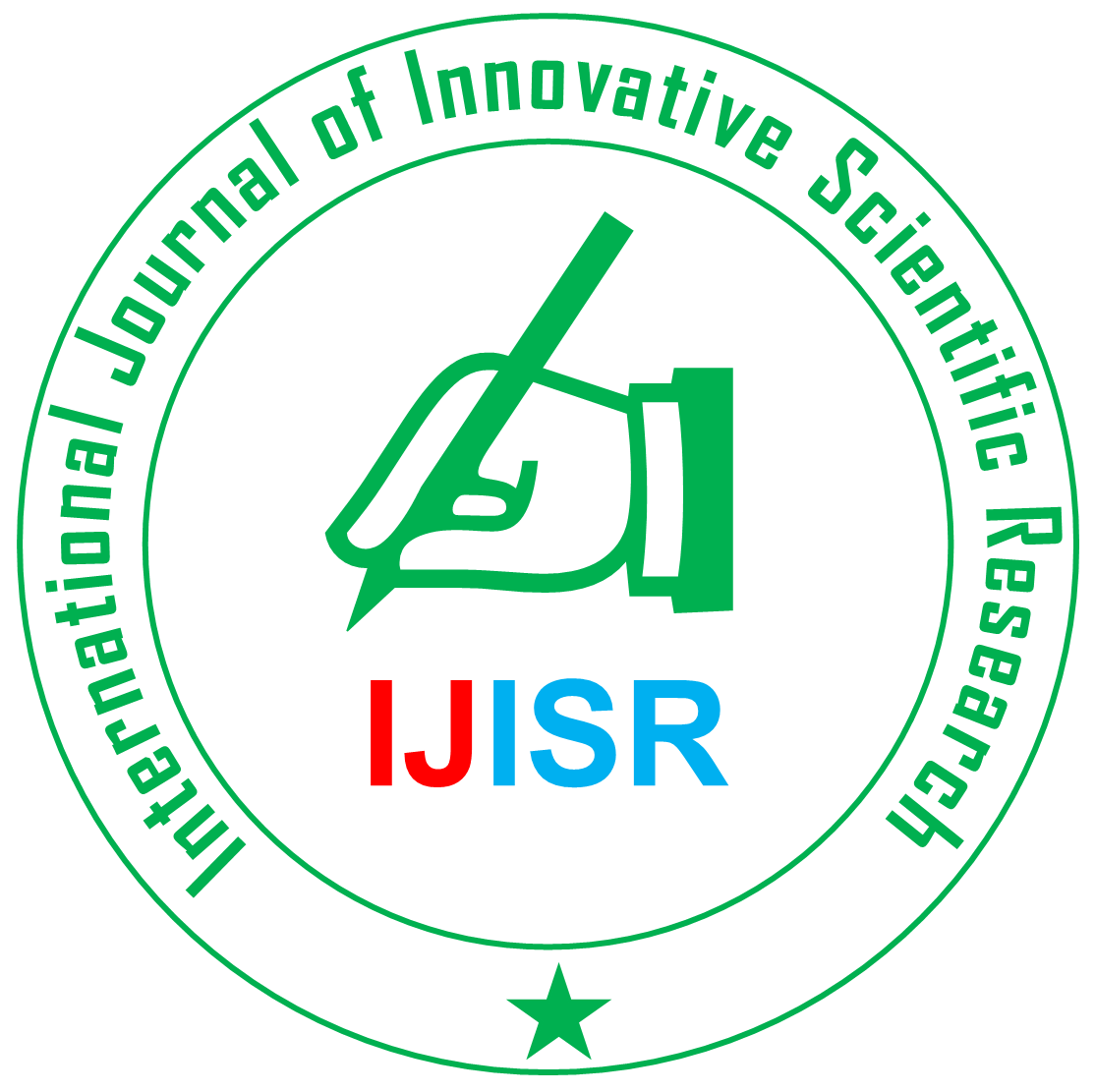Zinc Uptake, Transport and Homeostasis in Plants: Implications for Sustainable Agriculture
Keywords:
Defence, Heavy metal, Homeostasis, Mechanisms, Phytochelatins, Zinc transportersAbstract
Zinc (Zn), a mineral that naturally occurs in soil in terrestrial environments, is essential for plant growth because it plays crucial roles in many metabolic pathways. However, the presence of potentially toxic levels of zinc in soils can affect plant growth, photosynthetic and respiratory rates, mineral nutrition and the amount of reactive oxygen species that are produced. The weathering of rocks, forest fires, volcanoes, mining and smelting operations, manure, sewage sludge and phosphatic fertilizers are only a few of the routes via which Zn enters soils. The scientific community has focused on Zn's impacts on plants and vital role in agricultural sustainability as a result of rising environmental alarm and the small window between Zn essentiality and toxicity in plants. Because of this, this review focuses on the most recent research on the numerous physiological and biochemical processes that are affected by high levels of zinc, as well as on the mechanisms of zinc uptake and transport and molecular aspects of excess zinc homeostasis in plants. This review also makes an effort to comprehend the mechanisms underlying Zn toxicity in plants and to give fresh viewpoints that aim to inspire more research into the subject. The review results will also provide light on different processes used by plants to deal with Zn stress, which will be very important to breeders who want to increase tolerance to Zn pollution.
Downloads
References
Aghajanzadeh, T. A., Prajapati, D. H., & Burow, M. (2020). Differential partitioning of thiols and glucosinolates between shoot and root in Chinese cabbage upon excess zinc exposure. Journal of Plant Physiology, 244, 153088.
Ahemad, M. (2019). The role of rhizobacteria in the phytoremediation of heavy metals: A review. Environmental Science and Pollution Research, 26(2), 1654-1664. doi: 10.1007/s11356-018-3688-3.
Antoniadis, V., Shaheen, S. M., Boersch, J., Frohne, T., Du Laing, G., & Rinklebe, J. (2017). A Critical Perspective on the Phytoremediation of Trace Elements from Contaminated Soils. Environmental International, 98, 29-46.
Baran, A. (2012). Assessment of zinc content and mobility in maize. Ecological Chemistry and Engineering. A, 19(6), 699-706.
Barrameda-Medina, Y., Montesinos-Pereira, D., Romero, L., Blasco, B., & Ruiz, J. M. (2014). Role of GSH homeostasis under Zn toxicity in plants with different Zn tolerance. Plant Science, 227, 110-121.
Caldelas, C., & Weiss, D. J. (2017). Zinc homeostasis and isotopic fractionation in plants: A review. Plant and Soil, 411(1-2), 17-46.
Caldelas, C., Dong, S., Araus, J. L., & Weiss, D. J. (2010). Zinc isotopic fractionation in Phragmites australis in response to toxic levels of zinc. Journal of Experimental Botany, 62(6), 2169-2178.
Cherif, J., Derbel, N., Nakkach, M., Bergmann, H., von Jemal, F., &Lakhdar, Z. B. (2010). Analysis of in vivo chlorophyll fluorescence spectra to monitor physiological state of tomato plants growing under zinc stress. Journal of Photochemistry and Photobiology, 101(3), 332-339.
Chibuike, G. U., & Obiora, S. C. (2014). Heavy metal polluted soils: The role of plants in bioremediation. International Journal of Soil Science, 9(1), 1-12.
Clemens, S., & Ma, J. F. (2016). Toxic metal accumulation in plants: A general overview. Environmental Science and Pollution Research, 23(20), 19905-19916.
Cui, Y., Huang, Z., & Zhang, S. (2021). Heavy metal bioavailability in the soil-plant system: The roles of soil properties and plant species. Environmental Science and Pollution Research, 28(34), 46295-46305.
Diaconu, M., Pavel, V. L., & Petre, V. (2020). Impact of Environmental Stress on Plant Growth and Development. Scientific Papers. Series A. Agronomy, 63(1), 18-24.
El-Kafafi, E. S., & Rizk, A. H. (2013). Effects of cadmium and combined cadmium-zinc concentrations on rooting and nutrient uptake of cowpea seedlings grown in hydroponics. American-Eurasian Journal of Agricultural and Environmental Sciences, 13, 1050-1056.
Gai, A. P. C., Santos, D. S., & Vieira, E. A. (2017). Effects of zinc excess on antioxidant metabolism, mineral content, and initial growth of Handroanthusimpetiginosus (Mart. ex DC.) Mattos and Tabebuia roseoalba (Ridl.) Sandwith. Environmental and Experimental Botany, 144, 88-89.
Garg, N., & Kaur, H. (2012). Influence of zinc on cadmium-induced toxicity in nodules of pigeonpea (Cajanus cajan L. Millsp.) inoculated with arbuscular mycorrhizal (AM) fungi. Acta Physiologiae Plantarum, 34, 1363-1380.
Garg, N., & Kaur, H. (2013a). Impact of Cd-Zn interactions on metal uptake, translocation, and yield in Cajanus cajan (L.) Millsp. genotypes colonized by arbuscular mycorrhizal (AM) fungi. Journal of Plant Nutrition, 36, 67-90.
Garg, N., & Kaur, H. (2013b). Response of antioxidant enzymes, phytochelatins, and glutathione production towards Cd and Zn stresses in Cajanus cajan (L.) Millsp. genotypes colonized by arbuscular mycorrhizal fungi. Journal of Agronomy and Crop Science, 199, 118-133.
Garg, N., & Singh, S. (2018). Arbuscular mycorrhiza Rhizophagusirregularis and silicon modulate growth, proline biosynthesis, and yield in Cajanus cajan L. Millsp. (pigeonpea) genotypes under cadmium and zinc stress. Journal of Plant Growth Regulation, 37, 46-63.
Glinska, S., Gapinska, M., Michlewska, S., Skiba, E., & Kubicki, J. (2016). Analysis of Triticum aestivum seedling response to the excess of zinc. Protoplasma, 253, 367-377.
Guo, Y., Han, Y., & Lu, J. (2020). Mechanisms and interactions of plant responses to heavy metal stress. Frontiers in Plant Science, 11, 570.
Hosseini, Z., &Poorakbar, L. (2013). Zinc toxicity on antioxidative response in (Zea mays L.) at two different pH levels. Journal of Stress Physiology & Biochemistry, 9, 66-73.
Imtiaz, M., Hussain, M., Shakir, S., & Saleem, M. F. (2016). Role of plants in heavy metal remediation and their potential for bioaccumulation. Environmental Science and Pollution Research, 23(10), 9837-9849.
Islam, F., Yasmeen, T., Riaz, M., Arif, M. S., Ali, S., & Raza, S. H. (2014). Proteus mirabilis alleviates zinc toxicity by preventing oxidative stress in maize (Zea mays) plants. Ecotoxicology and Environmental Safety, 110, 143-152.
Jain, A., Sinilal, B., Dhandapani, G., Meagher, R. B., & Sahi, S. V. (2013). Effects of deficiency and excess of zinc on morphophysiological traits and spatiotemporal regulation of zinc-responsive genes reveal incidence of cross talk between micro- and macronutrients. Environmental Science & Technology, 47, 5327-5335.
Jain, R., Srivastava, S., Solomon, S., Shrivastava, A. K., & Chandra, A. (2010). Impact of excess zinc on growth parameters, cell division, nutrient accumulation, photosynthetic pigments, and oxidative stress of sugarcane (Saccharum spp.). Acta Physiologiae Plantarum, 32, 979-986.
Jeevanantham, S., Saravanan, A., Hemavathy, R. V., Pugazhendhi, A., Yaashikaa, P. R., & Kumar, P. S. (2019). Phytoremediation of heavy metals: A review of recent developments and their applications. Chemosphere, 217, 429-447.
Jung, M. C. (2008). Effects of heavy metals on plant growth: An overview of molecular mechanisms. Journal of Soil Science and Environmental Management, 6(7), 100-111.
Kanwal, S., Bano, A., & Malik, R. N. (2016). Role of arbuscular mycorrhizal fungi in phytoremediation of heavy metals and effects on growth and biochemical activities of wheat (Triticum aestivum L.) plants in Zn-contaminated soils. African Journal of Biotechnology, 15(20), 872-883.
Khan, N., Bano, A., & Babar, M. A. (2021). Physiological and molecular mechanisms of plant responses to heavy metals. Environmental and Experimental Botany, 189, 104472.
Kherbani, N., Abdi, N., &Lounici, H. (2015). Effect of cadmium and zinc on growing barley. Journal of Environmental Protection, 6, 160-172.
Leitenmaier, B., & Küpper, H. (2013). Mechanisms of heavy metal uptake and transport in plants: The role of transporters and chelators. Physiologia Plantarum, 148(1), 58-71.
Leuci, R., Brunetti, L., Laghezza, A., Loiodice, F., Tortorella, P., &Piemontese, L. (2020). Importance of biometals as targets in medicinal chemistry: An overview of the role of zinc(II) chelating agents. Applied Sciences, 10, 4118.
Li, X., Yang, Y., Jia, L., Chen, H., & Wei, X. (2013a). Zinc-induced oxidative damage, antioxidant enzyme response, and proline metabolism in roots and leaves of wheat plants. Ecotoxicology and Environmental Safety, 89, 150-157.
Liu, Y., Zeng, G., & Wang, Y. (2020). Heavy metal pollution in soils: A review of the pollution sources and remediation techniques. Environmental Pollution, 261, 114228.
Lucini, L., & Bernardo, L. (2015). Comparison of proteome response to saline and zinc stress in lettuce. Frontiers in Plant Science, 6, 240.
Manoj, K., Sharma, P., Singh, R., & Gupta, A. (2020). Heavy Metal Stress and Enzyme Activity in Plants: An Overview. Plant Physiology and Biochemistry, 146, 123-129.
Marschner, P. (2012). Mineral Nutrition of Higher Plants (3rd ed.). Academic Press.
Memon, M. Y. (2016). Bioremediation of Heavy Metals: A Review of Recent Developments. Environmental Science and Pollution Research, 23(20), 20918-20931.
Michael, P. I., & Krishnaswamy, M. (2011). The effect of zinc stress combined with high irradiance stress on membrane damage and antioxidative response in bean seedlings. Environmental and Experimental Botany, 74, 171-177.
Nejad, R. H., Najafi, F., Arvin, P., & Firuzeh, R. (2014). Study of different levels of zinc sulfate (ZnSO4) on fresh and dry weight, leaf area, relative water content, and total protein in bean (Phaseolus vulgaris L.) plant. Bulletin of Environmental Pharmacology and Life Sciences, 3(6), 144–151.
Niu, Y., Zhang, Y., & Jiang, Y. (2021). Phytoremediation of heavy metals by plants: A review of mechanisms and applications. Chemosphere, 263, 128077. doi: 10.1016/j.chemosphere.2020.128077.
Noulas, C., Tziouvalekas, M., &Karyotis, T. (2018). Zinc in soils, water, and food crops. Journal of Trace Elements in Medicine and Biology, 49, 252–260.
O'Sullivan, C. A., Fillery, I. R., Roper, M. M., Richards, R. A., & Denton, M. D. (2019). Phytoremediation: Can Plants Really Help Clean Up the Soil? Plant and Soil, 441(1-2), 31-45.
O'Sullivan, C. A., Fillery, I. R., Roper, M. M., Richards, R. A., & Denton, M. D. (2019). Phytoremediation: Can Plants Really Help Clean Up the Soil? Plant and Soil, 441(1-2), 31-45.
Page, A. L., & Feller, C. (2015). Heavy metals and metalloids in soils: Biological and chemical behavior. Plant and Soil, 394(1), 19-34.
Paradisone, V., Barrameda-Medina, Y., Montesinos-Pereira, D., Romer, L., Esposito, S., & Ruiz, J. M. (2015). Roles of some nitrogenous compounds protectors in the resistance to zinc toxicity in Lactuca sativa cv. Phillipus and Brassica oleracea cv. Bronco. Acta Physiologiae Plantarum, 37, 137.
Pasricha, N., Kumar, R., & Singh, B. (2021). Enhancing phytoremediation potential of plants through genetic engineering and biotechnology: A review. Bioremediation Journal, 25(4), 185-197. doi: 10.1080/10889868.2021.1950698.
Paunov, M., Koleva, L., Vassilev, A., Vangronsveld, J., &Goltsev, V. (2018). Effects of different metals on photosynthesis: Cadmium and zinc affect chlorophyll fluorescence in durum wheat. International Journal of Molecular Sciences, 19, 787.
Pavithra, G. J., Mahesh, S., Parvathi, M. S., Basavarajeshwari, R. M., Nataraja, K. N., & Shankar, A. G. (2016). Comparative growth responses and transcript profiling of zinc transporters in two tomato varieties under different zinc treatments. Indian Journal of Plant Physiology, 21, 208–212.
Rai, P. K., Lee, S. S., Zhang, M., Tsang, Y. F., & Kim, K. H. (2020). Heavy Metals in Food Crops: Health Risks, Fate, Mechanisms, and Management. Environment International, 134, 105285. doi: 10.1016/j.envint.2019.105285.
Raklami, A., Bechtaoui, N., Tahiri, A.I., Anli, M., Meddich, A., & Oufdou, K. (2021). Use of Rhizobacteria to Reduce Abiotic Stress in Plants: A Sustainable Solution for Enhancing Crop Productivity. Frontiers in Agronomy, 3, 628610.
Rascio, N., & Navari-Izzo, F. (2011a). Heavy Metal Stress in Plants: A Review. Plant Signaling & Behavior, 6(10), 1530-1535.
Rascio, N., & Navari-Izzo, F. (2011b). Heavy Metal Stress in Plants: A Review. Plant Signaling & Behavior, 6(10), 1530-1535.
Reeves, R. D., & Baker, A. J. M. (2017). Hyperaccumulators of Metals and Metalloids: The Key Role of Plant Genomics in Understanding the Mechanisms of Accumulation and Tolerance. Plants, 6(3), 58.
Rehman, M. F., Zia, A., & Bibi, H. (2020). Heavy Metal Toxicity and Tolerance Mechanisms in Plants: An Overview. Plants, 9(10), 1454.
Rouphael, Y., & Bernardi, J. (2016). Effects of zinc on growth and antioxidant metabolism of Lactuca sativa L. var. longifolia. HortScience, 51(3), 275-281.
Rouphael, Y., & Bernardi, J. (2016). Effects of zinc on growth and antioxidant metabolism of Lactuca sativa L. var. longifolia. HortScience, 51(3), 275-281.
Sbartai, H., Djebar, M. R., Rouabhi, R., Sbartai, I., &Berrebbah, H. (2011). Antioxidative responses in tomato (Lycopersicon esculentum L.) roots and leaves to zinc. American Eurasian Journal of Toxicological Sciences, 3(1), 41–46.
Sharma, P., Dubey, R. S., & Singla-Pareek, S. L. (2021). Accumulation and detoxification of heavy metals by plants. Environmental Science and Pollution Research, 28(32), 42434-42445.
Shrivastava, A., & Singh, S. (2019). A Review on the role of Phytoremediation in Heavy Metal Contaminated Soil. Bioremediation Journal, 23(4), 158-167.
Singh, R. P., Mishra, S., Jha, P., Raghuvanshi, S., & Jha, P. N. (2018). Effect of inoculation of zinc-resistant bacterium Enterobacter ludwigii CDP-14 on growth, biochemical parameters and zinc uptake in wheat (Triticum aestivum L.) plant. Ecological Engineering, 116, 163–167.
Sobariu, D. G., Curteanu, S., & Toma, C. (2017). Environmental impacts of heavy metal pollution in soils. Journal of Environmental Protection and Ecology, 18(2), 682-688.
Song, A., Li, P., Li, Z., Fan, F., Nikolic, M., & Lian, Y. (2011). The alleviation of zinc toxicity by silicon is related to zinc transport and antioxidative reactions in rice. Plant and Soil, 344, 319–333.
Stuiver, C. E. E., Posthumus, F. S., Parmar, S., Shahbaz, M., Hawkesford, M. J., & Kok, L. J. D. (2014). Zinc exposure has differential effects on uptake and metabolism of sulfur and nitrogen in Chinese cabbage. Journal of Plant Nutrition and Soil Science, 177, 748–757.
Subba, P., Mukhopadhyay, M., Mahato, S. K., Bhutia, K. D., Mondal, T. K., & Ghosh, S. K. (2014). Zinc stress induces physiological, ultra-structural and biochemical changes in mandarin orange (Citrus reticulata Blanco) seedlings. Physiologia Plantarum, 20(4), 461–473.
Sun, H., Zhang, W., & Wang, Y. (2016). Metal ion transport in plants: A review. Plant Physiology and Biochemistry, 103, 12-20.
Tangahu, B. R., Zubair, M., & Jaafar, H. (2011). A review of heavy metal pollution in soil and plants: The role of phytoremediation. Environmental Science and Pollution Research, 18(3), 487-504.
Tiecher, T. L., Tiecher, T., Ceretta, C. A., Ferreira, P. A. A., Nicoloso, F. T., Soriani, H. H., De Conti, L., Kulmann, M. S. S., Schneider, R. O., & Brunetto, G. (2017). Tolerance and translocation of heavy metals in young grapevine (Vitis vinifera) grown in sandy acidic soil with interaction of high doses of copper and zinc. Scientia Horticulturae, 222, 203–212.
Tsonev, T., & Lidon, F. J. C. (2012). Zinc in plants—an overview. Emirates Journal of Food and Agriculture, 24(4), 322–333.
Vijayarengan, P., & Mahalakshmi, G. (2013). Zinc toxicity in tomato plants. World Applied Sciences Journal, 24, 649–653.
Villiers, T. D., Møller, I. M., & Bøhn, T. (2011). The impact of heavy metals on plant growth and metabolism: A review. Environmental Science and Pollution Research, 18(3), 486-505.
Wang, J., Wang, Z., & Wang, Y. (2019). Bioremediation of heavy metal-contaminated soils: A review of recent advances. Environmental Science and Pollution Research, 26(7), 6064-6078.
Wang, P., Menzies, N. W., Lombi, E., McKenna, B. A., de Jonge, M. D., Donner, E., Blamey, F. P. C., Ryan, C. G., Paterson, D. J., Howard, D. L., James, S. A., &Kopittke, P. M. (2013). Quantitative determination of metal and metalloid spatial distribution in hydrated and fresh roots of cowpea using synchrotron-based X-ray fluorescence microscopy. Science of the Total Environment, 463–464, 131–139.
Wang, X., Zhao, L., Zhang, L., Wu, Y., Chou, M., & Wei, G. (2018). Comparative symbiotic plasmid analysis indicates that symbiosis gene ancestor type affects plasmid genetic evolution. Letters in Applied Microbiology, 67(1), 22–31.
Wang, Y., Yang, J., Miao, R., Kang, Y., & Qi, Z. (2021). A novel zinc transporter essential for Arabidopsis zinc and iron-dependent growth. Journal of Plant Physiology, 256, 153296.
Yang, H. F., Zhang, J., & Li, J. L. (2012). Physiological response to zinc pollution of rape (Brassica chinensis L.) in paddy soil ecosystem. Advanced Materials Research, 356–360, 39–43.
Yang, Y., Sun, C., Yao, Y., Zhang, Y., & Achal, V. (2011). Growth and physiological responses of grape (Vitis vinifera “Combier”) to excess zinc. Acta Physiologiae Plantarum, 33, 1483–1491.
Youssef, M. M., &Azooz, M. M. (2013). Biochemical studies on the effects of zinc and lead on oxidative stress, antioxidant enzymes, and lipid peroxidation in okra (Hibiscus esculentus cv. Hassawi). Science International, 1(3), 29–38.
Downloads
-
Download PDF
 Abstract Views: 68,
Abstract Views: 68,  Download PDF: 58
Download PDF: 58
Published
How to Cite
Issue
Section
License
Copyright (c) 2024 International Journal of Innovative Scientific Research

This work is licensed under a Creative Commons Attribution-ShareAlike 4.0 International License.














